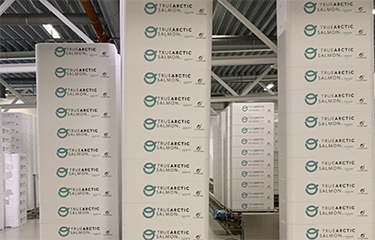Cermaq has piloted a project measuring the company’s plastics use across its operations for the Global Salmon Initiative (GSI).
The Oslo, Norway-based salmon farming company said the project measured the company’s plastics use across its smolt facilities, aquaculture sites, and processing plant over the past year. In total, the company said it found 350 different plastic items in use across the company’s supply chain, which it classified into three main groups: single-use, short-term, and long-term/infrastructure.
"As salmon farmers, we see the impacts of plastic each day, which is why it is important to us to act,” Cermaq Chief Officer of Sustainability and Communication Lars Galtung said in a release. “We did this pilot with Global Salmon Initiative to build knowledge, and hence be prepared on actions needed to improve as a global industry and for each company to meet future requirements on recirculation, waste management and reporting."
The pilot was carried out at three Cermaq locations in Norway: the Forsan hatchery in Nordland, the Toknebuktneset aquaculture sea site in Finnmark, and the Rypefjord processing plant in Finnmark.
Single-use plastics found in the pilot included packaging, fish boxes, containers, feedbags, disposable lab coats, and other items. According to Cermaq, single-use plastics made up 46 of the 350 plastics, with 90 percent of all single-use plastics being used in the company’s processing plant, and the salmon farm using the fewest.
Short-term plastics included gloves, life vests, dry suits, sampling equipment, ropes, and boots. This portion made up 131 different items, with sea site production taking up half of that amount.
The company's use of long-term plastics included water pipes, tanks, pumps, cage collars, walkways, lice skirts, plastic boats, conveyer belts, and insulation. Most of these products were used in the company’s smolt facility.
The pilot project weighed all the materials to estimate the amount of plastic the company uses on a wider scale across its total operations, based on what it used at the three sites surveyed.
With the new information, GSI – an organization created in 2013 by many of the world’s largest farmed salmon producers, including Cermaq – will be able to add to a wider-scale map of plastics use in salmon farming. Knowing where plastics are used the most, and where alternative materials could be used, could help reduce the global footprint of plastics use in salmon farming.
"This process has been very valuable, and we have a much better picture of our situation,” Galtung said. “This is a great initiative from GSI and together we will now look at how we can take this further to improve circular production where all the plastic is reusable, recyclable, or compostable.”
Photo courtesy of Cermaq







